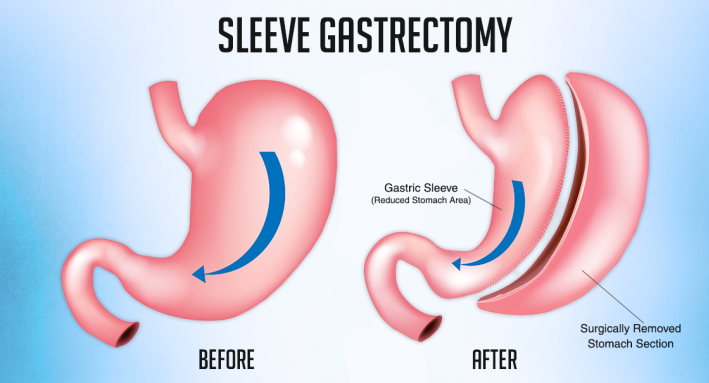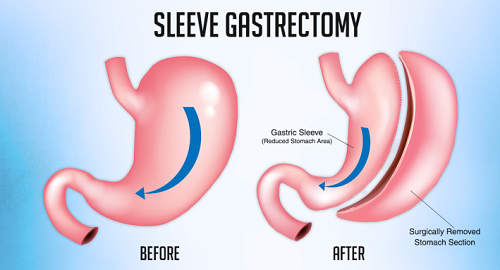Lapsurgery.com.au, Sleeve Gastrectomy Procedure – Sleeve gastrectomy, also known as gastric sleeve surgery, is a surgical procedure aimed at promoting weight loss by reducing the size of the stomach. This article outlines the key steps involved in this procedure.
Preoperative Evaluation

Before undergoing sleeve gastrectomy, patients undergo a thorough preoperative evaluation, including medical history assessment, physical examinations, and often psychological evaluations to ensure their suitability for the surgery.
Patient Preparation:
On the day of surgery, patients are prepared by fasting for a specified period. Intravenous lines are established, and anesthesia is administered to induce a state of unconsciousness throughout the procedure.
Trocar Placement
The surgeon begins by making multiple small incisions in the abdominal wall. Trocars, or narrow tubes, are then inserted through these incisions to provide access for the surgical instruments.
Removal of Greater Curvature
The next step involves the removal of a significant portion of the stomach, particularly the greater curvature. This is performed using stapling devices to create a tubular structure resembling a banana or sleeve.
Staple Line Reinforcement
To enhance the integrity of the newly formed stomach, the staple line is often reinforced with additional sutures or staples. This helps minimize the risk of leakage or other complications.
Closure and Recovery
Once the sleeve is created and reinforced, the surgical instruments are withdrawn, and the small incisions are closed. Patients are then moved to the recovery area, where they are monitored closely as they wake from anesthesia.
Postoperative Care
After surgery, patients follow a strict postoperative care plan, which includes a gradual transition to a liquid diet followed by the introduction of soft and solid foods. Regular follow-up appointments with healthcare professionals are crucial to monitor progress and address any concerns.
Benefits and Risks
Sleeve gastrectomy has proven effective in promoting significant and sustained weight loss. However, like any surgical procedure, it carries risks, including infection, bleeding, and potential complications related to the reshaped stomach.
Long-Term Lifestyle Changes
Success with sleeve gastrectomy often hinges on long-term lifestyle modifications, including dietary changes and regular physical activity. Patients are encouraged to work closely with a healthcare team to achieve and maintain a healthy weight.
Closing
In conclusion, sleeve gastrectomy is a well-established surgical option for individuals seeking substantial weight loss. It is essential for patients to thoroughly understand the procedure, commit to postoperative care, and embrace a healthier lifestyle for long-term success.

